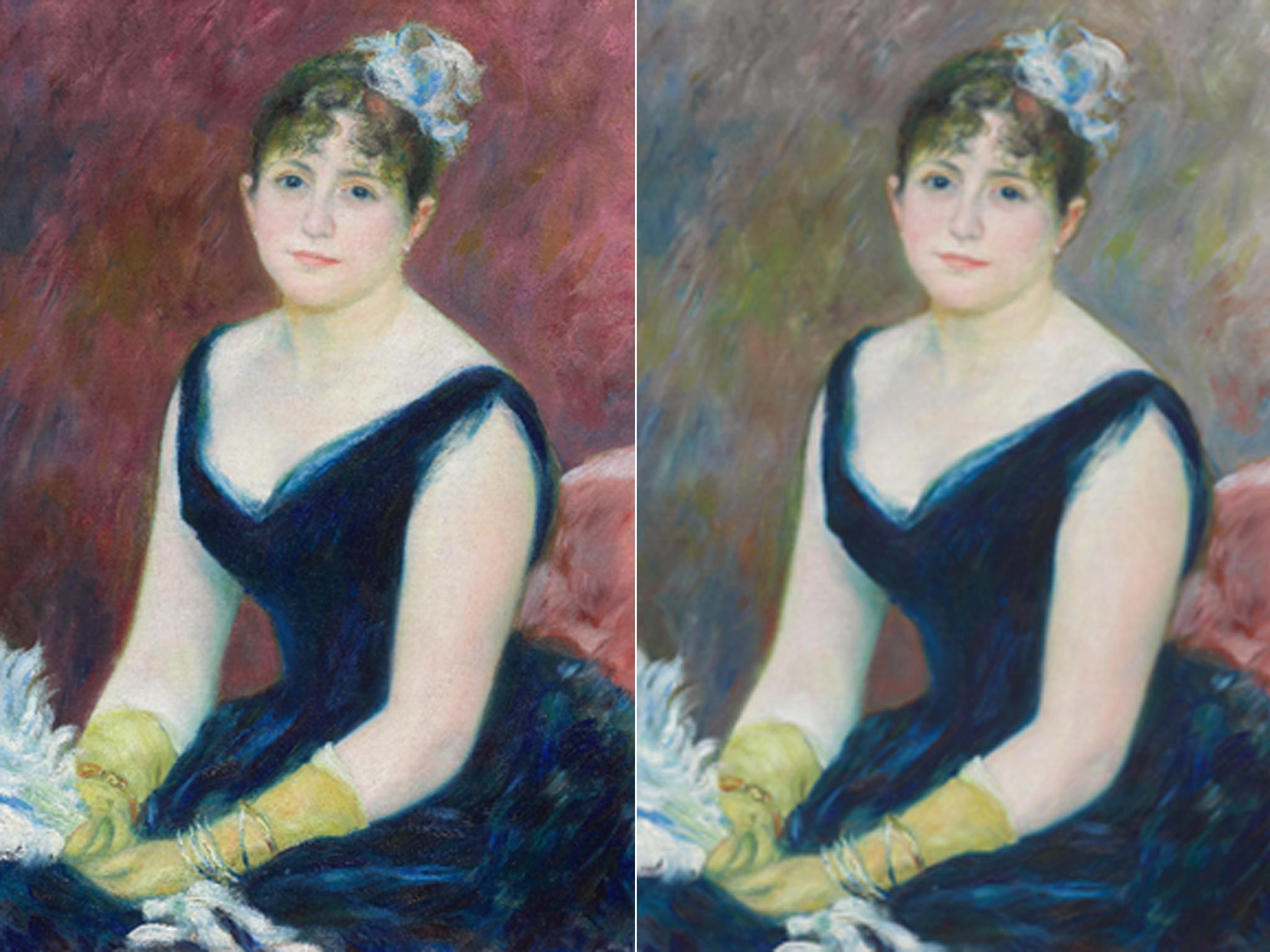Scientists digitally reconstruct Renoir portrait

Your support helps us to tell the story
From reproductive rights to climate change to Big Tech, The Independent is on the ground when the story is developing. Whether it's investigating the financials of Elon Musk's pro-Trump PAC or producing our latest documentary, 'The A Word', which shines a light on the American women fighting for reproductive rights, we know how important it is to parse out the facts from the messaging.
At such a critical moment in US history, we need reporters on the ground. Your donation allows us to keep sending journalists to speak to both sides of the story.
The Independent is trusted by Americans across the entire political spectrum. And unlike many other quality news outlets, we choose not to lock Americans out of our reporting and analysis with paywalls. We believe quality journalism should be available to everyone, paid for by those who can afford it.
Your support makes all the difference.Scientists have made a digital reconstruction of a Renoir portrait with its original colours as they would have looked to the artist when he finished the painting in 1883, before the red pigment he used had faded due to its sensitivity to light.
The original portrait of Madame Leon Clapisson has faded significantly over the past 130 years but the original colour of the reddish background had been preserved under the frame of the painting, said Richard Van Duyne of Northwestern University in Evanston, Ilinois.
Using a technique called ramen spectroscopy, Dr Van Duyne was able to analyse the molecular make-up of the pigments used in the painting and make comparisons between the exposed and unexposed parts of the portrait to make a full-sized digital reconstruction.
The analysis showed that Renoir used a brilliant pigment called carmine lake, which is composed of organic molecules and is extremely sensitive to light. The analysis is one of several on the chemical make-up of artworks, including one showing that Picasso used ordinary house paint in some of his paintings.
Join our commenting forum
Join thought-provoking conversations, follow other Independent readers and see their replies
Comments